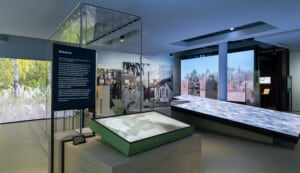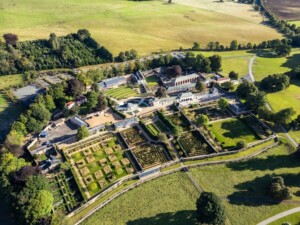Europe has a wide range of museums to please all types of culture buffs and history lovers, from world-class art galleries to fascinating science centres, and from natural history institutions to in-depth explorations of niche topics.
While the Louvre in Paris reigns supreme as the world’s most-visited museum and London boasts five of the most popular, here we shed some light on some of those that don’t always top the attendance tables but are well worth a visit, including some household names and lesser-known gems.

Europe’s top museums
Centre Pompidou – Paris, France
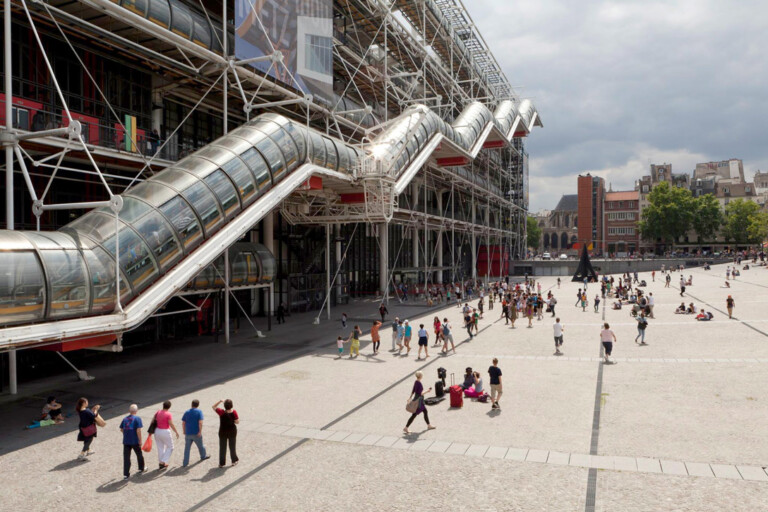
Centre Pompidou, officially known as the Centre national d’art et de culture Georges-Pompidou and often referred to in English as the Pompidou Centre, was designed by Richard Rogers, Su Rogers, Renzo Piano and Gianfranco Franchini. The striking building has an ‘inside-out’ design, with structural systems, mechanical systems, and circulation exposed on its exterior.
It was completed in 1977 and was closed for renovations from October 1996 to January 2000. The museum also plans to close for five years from summer 2025 until 2030 for a major expansion and renovation project. The original renovation plan involved closing the Centre Pompidou for four years from the end of 2023. However, the museum has now extended its closure period by a year. The Centre Pompidou will celebrate its 50th anniversary in 2027.
The renovations will begin in 2026. During its closure, the museum will focus on its new sites in Brussels and New Jersey. These are now scheduled to open in 2025 and 2026, respectively.
The museum has hosted a number of major exhibitions, highlighting a wide range artists including Matisse, Edvard Munch, Alice Neel, David Hockey, Piscasso, Francis Bacon, Mona Hatoum, Joan Miró, Sophie Calle and many more. The 2013 retrospective on Salvador Dalí broke the museum’s daily attendance record.
Centre Pompidou plans to open a new contemporary art museum in Seoul, South Korea in 2025 and has also signed an agreement with Saudi Arabia to open a new contemporary art museum in the kingdom’s AlUla development. It already has branches in Spain, Belgium and China.
The Rijksmuseum – Amsterdam, Netherlands
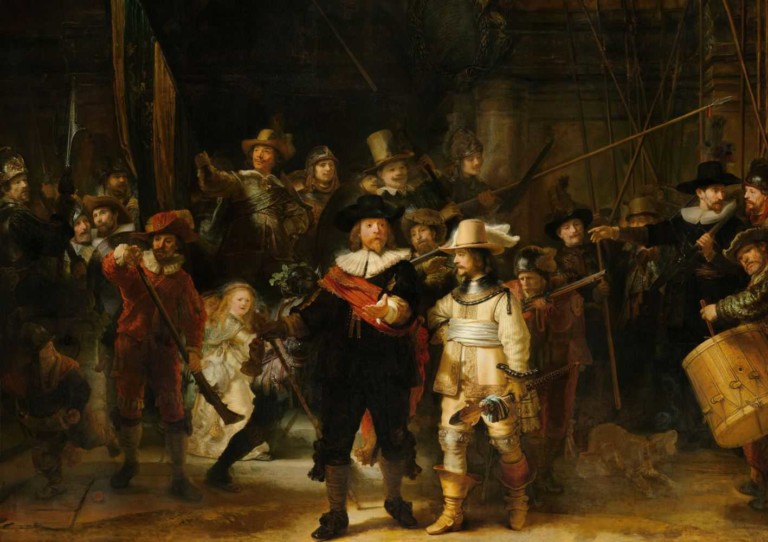
The national museum of the Netherlands, the Rijksmuseum [pictured, top] is devoted to Dutch art and history. The museum is situated in Museum Square, next to the Concertgebouw, the Stedelijk Museum Amsterdam, and the Van Gogh Museum.
With a total collection of 1.1 million items, dating from between 1200–2000, it is the biggest art museum in the Netherlands. Highlights include works of art by Rembrandt, Frans Hals, and Johannes Vermeer. In 2023, the museum celebrated the most visited exhibition in its history after welcoming 650,000 visitors to its blockbuster Vermeer show. It broke its own record despite limiting visitor numbers. The exhibition, which closed on 4 June, drew 650,000 visitors from 113 nations during its 16-week run.
The current building was designed by Pierre Cuypers and opened in 1885. It has been designated as a rijksmonument, or national heritage site, since 1970. The Rijksmuseum also displays a small Asian collection in the Asian pavilion which opened in 2013.
In 2012, the Rijksmuseum became one of the world’s first museums to make its entire collection accessible online. In 2019 it announced that it had teamed up with Dell Technologies to digitise the whole collection, making it accessible to all by 2023.
The Rijksmuseum is open to all,” said Rob Hendriks, head of IT at the museum. “That’s why we are digitising our entire collection and making it available to a worldwide audience – we’re aiming to achieve the same quality and experience as you would have visiting the museum itself.”
In 2023, the museum announced that it would return six colonial objects from its collection to Sri Lanka, including a looted cannon.
The National Museum of Scotland – Edinburgh, UK
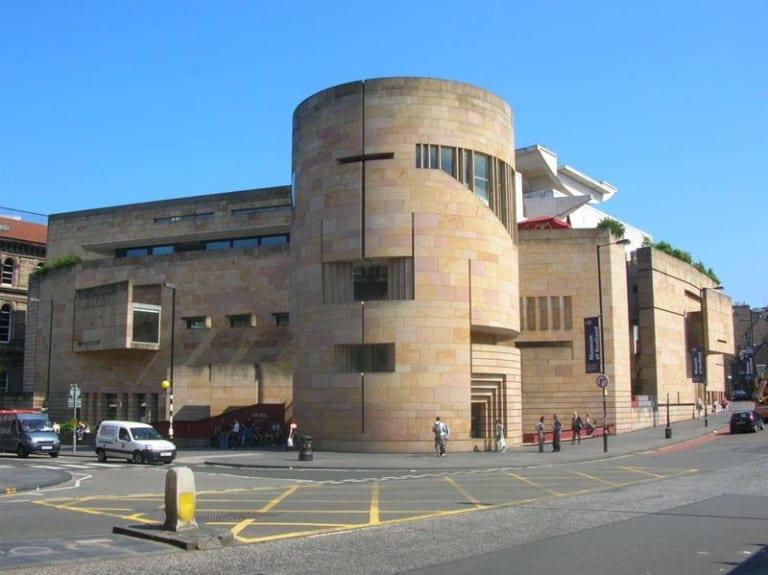
In 2006, the Museum of Scotland, home to collections of Scottish artefacts, culture, and history, formally combined with the nearby Royal Scottish Museum, home to international collections of science and technology, to form the National Museum of Scotland in Edinburgh. Visitors can also explore the collections of the former National Museum of Antiquities of Scotland.
The museum features items from around the globe, including artefacts from the fields of geology, natural history, art, science, archaeology, technology, and world cultures. The eclectic collection includes the stuffed body of Dolly the sheep, Ancient Egyptian artefacts, one of Elton John’s suits, the Jean Muir Collection of costume and a large kinetic sculpture called the Millennium Clock. Visitors can also view the Scottish Maiden, an early iteration of the guillotine.
In 2022, the museum opened a new temporary exhibition called ‘Doctor Who Worlds of Wonder’, set to run until May 2023. This explores the science behind the popular BBC television series.
Produced by Sarner International, the leading experiential design expert, under license from BBC Studios, the educational exhibition features eight zones of immersive experiences and interactive elements. These include a TARDIS Tech room and the Monster Vault, with iconic villains like the Weeping Angels and the Daleks.
The Prado Museum – Madrid, Spain
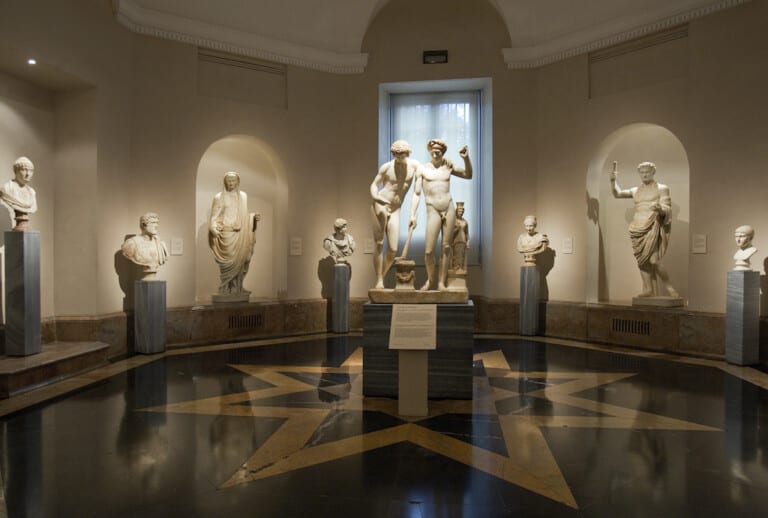
Madrid’s Prado Museum, or Museo Nacional del Prado, is Spain’s national art museum. It holds one of the best collections of European art, spanning the period from the 12th century to the early 20th century. It dates back to 1819 and is home to around 8,200 drawings, 7,600 paintings, 4,800 prints, and 1,000 sculptures, as well as other works of art and historic documents.
The Prado Museum holds a large collection of work by Francisco Goya, in addition to art by Hieronymus Bosch, El Greco, Peter Paul Rubens, Titian, Albrecht Dürer, Raphael and Diego Velázquez.
In 2017, digital content by Javier Sainz de los Terreros, digital communication manager at the Prado Museum, became a global hit. People around the world connected with the intimate walks he filmed on a phone with a selfie-stick as he walked through the Prado’s empty galleries. His videos of ordinary museum workers talking about their favourite paintings were featured in the New York Times.
Speaking to blooloop in 2022 about the museum’s digital strategy, he said:
“The kernel of the idea was that it is a privilege for a museum worker to be able to walk through the museum when it’s empty and to be alone in front of the masterpieces. It was a feeling I wanted to share with people, in a way that they would almost be able to smell the place and hear their footsteps echoing. It’s very special, and I wanted them to be able to experience that, and enjoy the paintings so much more, because of it.”
The Pergamon Museum – Berlin, Germany

The Pergamon Museum is part of the UNESCO World Heritage listed Museum Island in the historic centre of Berlin. It houses the Antikensammlung (Antiquities Collection), which features the famous Pergamon Altar, as well as the Vorderasiatisches Museum (Museum of the Ancient Near East) and the Museum für Islamische Kunst (Museum of Islamic Art). Parts of the building will be closed for renovation until 2025.
As well as the Pergamon Altar, visitors can also see the Market Gate of Miletus, The Ishtar Gate and the Processional Way, Babylon. The Mshatta Facade and The Meissner fragment from the Epic of Gilgamesh. While it is an impressive collection, there is some controversy over the acquisition of some items, with many calling for the artefacts to be returned to their countries of origin.
The museum collaborated with Google Arts and Culture to provide a virtual tour of its collections, something which proved popular during the COVID-19 lockdowns.
Kunsthistorisches Museum – Vienna, Austria

The Kunsthistorisches Museum, or Museum of Art History, in Vienna is the largest art museum in Austria. The palatial building with its striking octagonal dome dates back to 1891 and it was originally establish to house the Habsburgs’ art collection, along with the Natural History Museum which faces it across Maria-Theresien-Platz.
The museum includes the portrait and armour collections of Ferdinand of Tirol, the collections of Emperor Rudolph II and the painting collection of Archduke Leopold Wilhelm. Highlights include works by Raphael, Albrecht Dürer, Titian, Rubens, Johannes Vermeer, Diego Velázquez and Thomas Gainsborough.
In 2021, some of the museum’s nudes were uploaded to the Vienna Tourist Board’s OnlyFans channel. The tourism board took to the adult content subscription service to escape the censorship of nude art on social media platforms such as Facebook, Instagram and TikTok.
“Vienna is home to some of the world’s most famous artworks, many containing nudity,” said the board’s OnlyFans account. “The most prominent social networks have policies in place that ban or censor such works. With our OnlyFans account, we want to give these artworks the freedom they deserve – including on social media.”
The channel also featured nudes from Vienna’s Albertina, Leopold Museum, and Naturhistorisches Museum.
The Uffizi Gallery – Florence, Italy

The Uffizi Gallery situated close to the Piazza della Signoria in Florence’s Historic Center, is one of the most popular and significant museums in Italy, as well as being one of the best-known in the world. It has a large collection of priceless artwork, especially from the Italian Renaissance period. One of the first modern museums, the Uffizi has been open to visitors by request since the sixteenth century. It first opened to the public in 1765.
Highlights include works by Italian artists like Botticelli, Michelangelo, Caravaggio and Leonardo da Vinci, in addition to works by German, Dutch and Flemish painters. It also holds a collection of ancient statues and busts from the Medici family, including ancient Roman copies of lost Greek sculptures.
In 2020, the museum joined TikTok and began sharing videos of classic artworks dancing to modern music in order to engage with a younger audience. It later revealed that this move had doubled its number of young visitors.
In Flanders Fields Museum – Ypres, Belgium

In Flanders Fields Museum in Ypres, Belgium, tells the story of the First World War in the Flanders region using modern museum techniques and multimedia. Set on the second floor of the Cloth Hall in the centre of the city, which was badly damaged itself during the conflict. The goal of the museum is not to glorify war but instead to illustrate its futility.
The museum explores the experiences of individuals within the larger picture of WWI, telling personal stories through a variety of objects alongside interactive installations. On entering the museum, guests receive a Poppy Bracelet which has a micro-chip inside. This guides them through a journey that recreates the pain and tragedy of the War, featuring video projections, interactive touchscreens and soundscapes.
The museum’s website states:
“In a country where war has raged, it lingers, even if that war is already a century behind us. For each of the more than 600,000 dead who fell in Belgium, for each of the more than 425,000 graves and names on memorials and for the hundreds of traces and relics in the front region, for each of the millions affected…there is a story of grief, pain and ordeal somewhere in the world.
“The In Flanders Fields Museum conserves the link with this war past. Because the nature of war does not change over time, the museum considers presenting this war story to be a universal and contemporary message of peace, and therefore an important social mission.”
Universeum – Gothenburg, Sweden

Opened in 2001, Universeum is a public science centre and museum in Gothenburg, Sweden. Located next to Liseberg, it is the Nordic region’s most visited science centre
Across a number of different zones, the science centre explores a wide range of topics. For instance, its Ocean Zone includes a 1.4 million-litre tank with sharks, rays, and tropical fish where visitors can walk through a tunnel and view the fish from below. Meanwhile, the Space Zone has nearly 40 different stations to explore, where visitors can learn about the earth, the moon, Mars, the solar system and space travels. There’s also a Rainforest Zone, a Human Zone and a Reptilarium.
In addition, visitors can get hands on in the Chemistry Lab and visualise research data in the Vislab, while younger guests can enjoy the Miniverseum.
The Auschwitz-Birkenau Memorial and Museum – Oświęcim, Poland

The Auschwitz‑Birkenau Memorial and Museum was created in April 1946 by Tadeusz Wąsowicz and other former Auschwitz prisoners, under the direction of Poland’s Ministry of Culture and Art. It preserves the site of the former German Nazi Auschwitz concentration and extermination camp, where over a million Jews, as well as Poles, Roma and other groups, were killed during WWII.
“It is certainly the most important memorial site around the world; definitely the most known,” said Dr Piotr Cywinski, speaking to blooloop in 2021. “The remembrance touches, in a very difficult and painful way, the core of the European experience of the Second World War.”
The Auschwitz‑Birkenau Memorial and Museum covers around 200 hectares, comprising Auschwitz I and the larger, outlying Birkenau (Auschwitz II).
Cywinski, on the museum’s mission, added:
“It’s not a topic that has to be confined to history and it shouldn’t be confined to history. It is something that has to continue to speak. Even the prisoners at the time of the camps were saying to themselves, ‘Never again.’ It is not something consigned to the past. It is relevant now and in the future. That is our road today.”
In 2024, the museum announced that it has partnered with an AI startup company to tackle hate speech and antisemitism on social media. The startup, TrollWall AI, specialises in the automatic moderation of comments on social media, based on artificial intelligence (AI) models.
The Acropolis Museum – Athens, Greece

The Acropolis Museum is an archaeological institution that focuses on the discoveries made at the Acropolis of Athens. The museum’s purpose is to house every artefact discovered on the site and its surrounding slopes, from the Greek Bronze Age to Roman and Byzantine Greece.
The museum, which opened in 2009, holds over 4,250 objects, displayed over an area of 14,000 square metres. Ahead of the museum’s construction, an architectural competition was held in 2000, with a winning proposal by Bernard Tschumi and Michael Photiades. The new Acropolis Museum was constructed on the south side of the Acropolis, 300 metres from its monuments.
In 2022, Pope Francis has announced plans to return its holdings of 2,500-year-old Parthenon marbles to Greece. There are three fragments held at the Vatican Museums, including a head of a horse, a head of a boy and a bearded male head. These have been in the Vatican’s collection since the 19th century.
The Greek Ministry of Culture and Sports called this a “generous” decision and said it hopes the move will put pressure on the British Museum to return its holdings of the Parthenon marbles.
The Grant Museum of Zoology – London, UK

The Grant Museum of Zoology is the last university zoological museum in London. Operated by University College London, is is currently closed for refurbishment and will reopen in autumn 2023.
This natural history collection was established by Robert Edmond Grant in 1828 as a teaching collection of zoological specimens and material for dissection. It is one of the oldest natural history collections in the UK. Its collection includes a rare quagga skeleton, thylacine specimens, dodo bones and Blaschka glass models. In total, it holds around 68,000 zoological specimens, many of which are rare and several of which have only recently been rediscovered.
The Grant Museum of Zoology temporarily closed in March 2023 in order to undertake a £300,000 improvement programme. It reopened later the same year, presenting a new narrative on Species under Threat, with updated displays that explore the topic biodiversity loss. The goal is to engage guests in the human impact on the planet’s diversity of life and discuss how UCL’s research is responding to climate change.
The Cité des Sciences et de l’Industrie – Paris, France

The Cité des Sciences et de l’Industrie (or City of Science and Industry) is the largest science museum in Europe, visited by around five million people each year. It features a planetarium, a submarine and an IMAX theatre, as well as special areas for children and teenagers.
The museum’s permanent exhibitions explore topics like the brain, genetics, mathematics, sound, and the story of the universe. In addition, it regularly hosts temporary exhibitions, in partnership with Universcience, a company created in 2010 to join together the Cité des sciences et de l’industrie and the Palais de la découverte in Paris.
For example, in 2021, Universcience created the travelling exhibition Banquet, which made its debut at the Cité des Sciences et de l’Industrie. This explored the concept of food and feasting through sight, smell, taste, touch, and sound.
The museum also went on to host Cancers [pictured], an exhibition designed to break down the walls of taboo and stigma surrounding different cancers, in 2023. With this, Universcience hopes to spark conversations and promote greater awareness and understanding of this disease, while also highlighting the ongoing progress being made in the fight against cancer. It also hosts a number of engaging children’s exhibitions.
The Neue Nationalgalerie – Berlin, Germany

The Neue Nationalgalerie is a modern art museum designed by Ludwig Mies van der Rohe at the Kulturforum in Berlin. The Neue Nationalgalerie was built by former Bauhaus director Mies between 1965 and 1968 and home to a huge collection of 20th century art.
The collection covers periods like Cubism, Expressionism, the Bauhaus and Surrealism. It is home to works of art by the likes of Pablo Picasso, Ernst Ludwig Kirchner, Joan Miró, Wassily Kandinsky and Barnett Newman.
In 2021, it reopened following a six-year refurbishment project by David Chipperfield Architects, launching with three new exhibitions. These were‘Rosa Barba. In a Perpetual Now’, dedicated to film and media artist Rosa Barber, ‘Alexander Calder: Minimal/Maximal’ featuring works by sculptor Alexander Calder, and ‘The Art of Society, 1900–1945: The Nationalgalerie Collection’, showcasing works from the museum’s collection.
As part of the refurbishment, some sculptures were moved outside, including major works by Henry Moore, George Rickey, Eduardo Chillida and Robert Indiana.
The Van Gogh Museum – Amsterdam, Netherlands
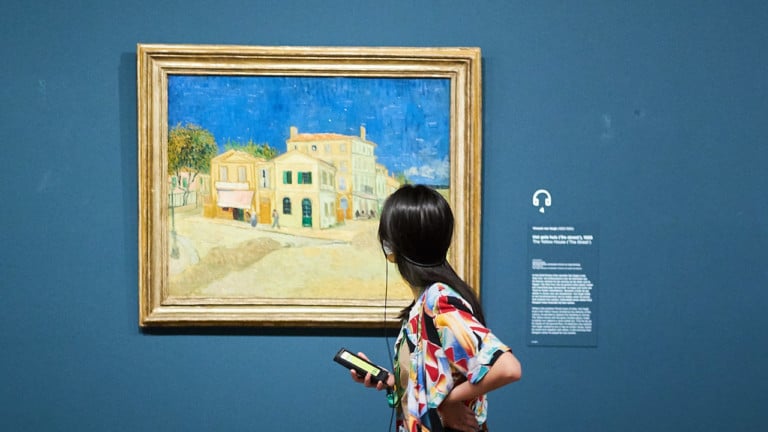
Amsterdam’s Van Gogh Museum holds the world’s largest collection of work by the Dutch artist, including 200 paintings, 400 drawings, and 700 letters. It opened in 1973 in the city’s Museum Square, close to the Stedelijk Museum, the Rijksmuseum, and the Concertgebouw. The museum buildings were designed by Gerrit Rietveld and Kisho Kurokawa. It is the most-visited museum in The Netherlands.
In 2019, the museum launched the Meet Vincent Van Gogh Experience, a popular immersive exhibition which has now toured around the world, including stops in London, Barcelona and Seoul.
In 2023, the Van Gogh Museum named Laurence des Cars, the first female director of the Louvre in Paris, as a member of its supervisory board. She will serve as a member of the Van Gogh Museum’s supervisory board for a period of four years. “It is an honour to join the Van Gogh Museum supervisory board, whose members I would like to thank for their trust,” said Des Cars.
The same year, the museum launched an unlikely collaboration with Pokémon, offering themed activities across the institution. The goal was to introduce young artists and new audiences to the works of Vincent van Gogh.
The Guggenheim Museum Bilbao – Bilbao, Spain

The Guggenheim Museum in Bilbao is a museum of modern and contemporary art designed by Canadian-American architect Frank Gehry. It first opened to the public in 1997. One of the largest museums in the country, it is one of several museums belonging to the Solomon R. Guggenheim Foundation. Visitors can discover permanent and visiting exhibits of works by both Spanish and international artists.
The museum is well-know for hosting large-scale works and installations by contemporary artists, for example Richard Serra‘s 100-meter-long Snake. It displays work by Basque artists alongside a selection of pieces from the foundation’s modern art collection. The museum’s inaugural exhibition was “The Guggenheim Museums and the Art of This Century”, a 300-piece overview of 20th-century art from Cubism to new media art.
In 2022, The Guggenheim Bilbao celebrated the best summer in its history after welcoming 449,477 visitors between June and August. The same year, it announced a new sustainability plan that involves measuring the carbon footprint of its indirect emissions. In 2023, the museum hosted an international conference on sustainability strategies, bringing together museum leaders from across the world to share their most innovative sustainability strategies and solutions.
The National Tile Museum – Lisbon, Portugal

The Museu Nacional do Azulejo or National Tile Museum is an art museum in Lisbon, Portugal that is dedicated to azulejo, the traditional tile work of Portugal. It holds on of the largest collections of ceramics in the world, and is located within the former Madre de Deus Convent.
The museum was established in 1965 and went on to become a National Museum in 1980. It is home to a range of decorative ceramic tiles, dating from the second half of the 15th century through to the present day. In addition, visitors can also discover ceramics, porcelain and fine tin-glazed pottery from the 19th to the 20th century. The museum journey begins with an exploration of the materials and techniques used for manufacturing tiles, and then visitors proceed through chronological exhibits.
The Ethnographic Open-Air Museum of Latvia – Riga, Latvia

The Ethnographic Open-Air Museum of Latvia is an open-air museum located just outside Riga, the capital of Latvia, on the shores of Jugla Lake. Inspired by open-air museums in Scandinavia, it first opened in 1932. Its original aim was to relocate a homestead from all four regions of Latvia, with reconstructed buildings where different crafts from those places were represented.
In 1991, when the country regained its independence, the museum started actively collecting and documenting Latvian heritage from the 1920s and 1930s, a time when Latvian agrarian reforms reshaped the countryside. In 1997, a new complex of farmers’ homesteads from the 1930s was opened to visitors.
The museum serves as a venue for cultural events, from folk concerts to craft festivals. It now includes 118 buildings over a space of 87 hectares and has around 150,000 artefacts in its collection.
The Museum of Communism – Prague, Czech Republic
The Czech Republic‘s Museum of Communism chronicles the Communist regime that ruled Czechoslovakia after World War II, with a focus on Prague. It offers an immersive view of life behind the Iron Curtain, bringing the period to life with authentic artefacts, interviews, archive photos, artwork, historical documents, and large-scale installations.
Over a space of nearly 1,500 square metres, the museum’s displays explore different aspects of life in Communist-era Czechoslovakia, such as daily life, politics, history, sports, economics, education, art (specifically Socialist Realism), propaganda in the media, the People’s Militias, the army, the police (including the secret police), censorship, political labor camps and more. Exhibits include mock-ups of a school classroom, a child’s bedroom, and an interrogation room
The museum’s goal is to help visitors understand more about the totalitarian regime that ruled the country from February 1948 until the Velvet Revolution in 1989.
Kilmainham Gaol – Dublin, Ireland

Kilmainham Gaol is a former prison in Kilmainham, Dublin, Ireland that is now run as a museum by the Office of Public Works, an agency of the Government of Ireland. A number of Irish revolutionaries, including the leaders of the 1916 Easter Rising, were imprisoned and executed in the prison by the orders of the UK Government.
It was first built in 1796 and decommissioned in 1924. A site of oppression and suffering, the prison fell into disrepair after WWII. Then, from the late 1950s, a grassroots movement developed, calling for its preservation. It first opened to the public in 1966 and the final restoration of the site was completed in 1971 when Kilmainham Gaol chapel was re-opened. Kilmainham courthouse, located beside the prison, opened in 2015 as the museum’s visitor’s centre.
This Dublin museum explores the story of the social and political history of the prison as well as the history of Irish nationalism and republicanism. Exhibits also detail the building’s restoration.
The Hungarian National Museum – Budapest, Hungary

The Hungarian National Museum was established in 1802 and serves as the country’s official museum of history, art, and archaeology. It is housed in a Neoclassical building, constructed specifically for the museum between 1837 and 1847.
Within the museum, the general history of Hungary is explored in two sections, firstly looking at the archaeology from prehistory to 804 AD and then displaying the country’s history from 804 to modern times. Topics covered include the age of the Arpads, the Turkish occupation, Transylvania, royal Hungary, the Rákóczi War of Independence, and the rise and fall of communism in Hungary.
The huge collection includes archaeological finds and historical artefacts, including the coronation cloak used by the Kings of Hungary, a statue of a handmade golden deer from the sixth century BC and a funerary crown from the thirteenth century.









